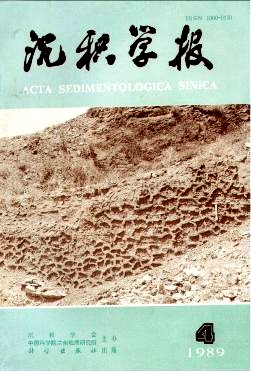A SEDIMENTARY FACIES STUDY OF LATE JURASSIC TO EARLY CRETACEOUS EPOCH OF SHIBEI DISTRICT IN JIUXI BASIN, GANSU
- Received Date: 1989-01-27
- Publish Date: 1989-12-10
Abstract: This paper deals with the information of sedimentary rocks , primary sedimentary structures, stratigraphic sequence, grain size, fossils, heavy minerals, clay minerals, trace elements and well logging, which have been obtained from Upper Jurassic to Lower Cretaceous in Shibei district is analyzed by synthetical methods including the sedimentologic analysis, geochemical analysis, geophysical and mathematical statistics etc. Seven sedimentary facies types in this area have been identified.They are diluvium fan, fluvial facies, deltaic, shore and shallow lacustrine, deeper and deep-water lacustrine, subaqueous fan and deep-water turbidity fan facies.These formed in different and closely related sedimentary environments. Based on these data, it can be seen that due to the characteristics, especially in hydrodynamic condition of Shibei District, sorrow facies belt formed and facies change rapidly, even in series of facies belts lack of some one facies. Each of the facies has its own distinctive feature-all of these are evidently different from that of the same kind of sedimentary facies forming in giant basins and vast alluvial plain areas.The fluvial facies in studied area, with fans of braided stream and diluvial characteristics. Most of the deltaic facies in the area are "constructional delta* .Subaqueous fan are characterized by proximal, relatively coarser grains in shallow- water environment, and have characters both of alluvial and turbidity deposits. Deep-water environment and turbidity developed in intermittent all of which may be characteristics of facies of turbidity fanJn addition, the shapes of grain-size distribution curve of each facies are quite difTerent.lt can be summarized as eight types which can be used as one of the basis of identifying sedimentary facies types. The results show that Northeast trend Bainan Contemporaneous Faults No.2 & No.3 and Shibei Asymmetric Depression is controlled by these faults and the facies association may depend on which---during the active period diluvial and subaqueous fan developed in the steep bank zone of the depression whereas the fluvial (point bar) and deltaic facies association developed in the gentle slope belt; During the more active stage, subaqueous fan and trubidity fan, deep-water mudstone and shale facies are developed in a belt of steep bank whereas fluvial, deltaic, shore and shallow lacustrine facies may be developed in a gentle slope belt.On the other hand, deep lacustrine facies mainly developed in the central region of the lake.The succession of sedimentary facies has certain regularities. The facies association and succession are controlled strictly by many factors such as tectonism, paleoclimate, paleogeographic, condition of depositional medium. The author also studies the abundance of trace elements and characteristics of paired ratios, in which the different terrestrial environments being recognize.In the summary, the values of V/Ni, Sr/Ba, Rb/K ratio increasing synchronously, however, the values of Ni/Co, Fe/Mn, K /Na, Na/Ca, Sr/Ca, Mg/Ca ratio decreasing gradually with the evolution of facies from diluvial to fluvial, delta, shore and shallow lacustrine, deeper and deep lacustrine facies.These provide reference evidences for identifying sedimentary facies.
| Citation: | Yao Jinfu, Zhu Lianfang. A SEDIMENTARY FACIES STUDY OF LATE JURASSIC TO EARLY CRETACEOUS EPOCH OF SHIBEI DISTRICT IN JIUXI BASIN, GANSU[J]. Acta Sedimentologica Sinica, 1989, 7(4): 105-111. |






 DownLoad:
DownLoad: